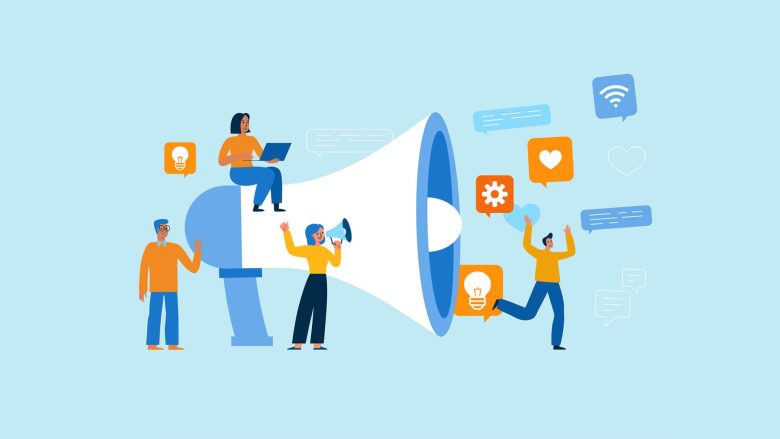Digital audience development is an organized activity undertaken by organizations to build long-term relationships with potential customers. In contrast, marketing is more about sharing information about a product with the audience. The definition of audience development certainly overlaps the definition of marketing as the former also gets the info out using personal approaches and networking. However, unlike marketing, it doesn’t use mass advertising.
For example, most individuals consider word of mouth the best form of advertisement. But again, word of mouth is all about managing relationships efficiently, which is one of the elements of digital audience development. So in simple words, it can be said that digital audience development and marketing are interrelated. And this is one of the primary reasons people fail to differentiate between the two. Moreover, brands need to rely on marketing professionals like Viafoura for the best results.
Let’s dig deeper into the two concepts and learn about the major factors that differentiate them.
1. Approach your audience directly
Digital audience development is about working and creating a brand with the target audience in a way that the partnership can prove to be beneficial for both the audience and the organization.

Source: inc.com
- Effectively audience development requires a collaborative approach in creating and presenting the product or service to engage the audience, so they are encouraged to invest emotionally in it.
- Therefore, audience development is a blend of 4 elements – Collaboration, Community, Caring (for the audience), and Connections.
- On the other hand, marketing is a business term that refers to product promotion, pricing, advertising, branding, and distribution channels.
- Simply put, it can be defined as a set of processes or an organizational function for communicating, creating, and facilitating customers with value-oriented products and services.
The approach in marketing is driven toward customer relationship management so that it benefits the stakeholders as well as the organization. Marketing is a blend of place, product, promotion, and price.
2. Focus on refining your intent
Digital audience development processes are focused on building a good relationship with the audience who may potentially become their loyal patrons or promote its final product. The brands promote their products to reach out to a wide spectrum of audiences.
Marketing tactics and strategies are driven toward showing the organization’s products/services to a new audience. It is where the role of audience development comes in. Before selling the product or building a mutually beneficial relationship, brands need to make real initial connections.
It would be safe to say that marketing promotes and creates a product your audience thinks they want. The intent of marketing is inclined more towards the organization’s benefits. Audience Development, on the other hand, is working with and creating branded products with the audience to benefit both the organization and the audience.
3. Cost of overall efforts and campaigns

Source: shopify.com
Marketing is comparatively a pricey affair.
- The average cost of an ad can go upto $500. And generally, it takes around 9 ads to influence a person to purchase the product.
- So, on average, 3 ads for grabbing their attention, 3 ads for gaining their consideration, and 3 ads influence them to go ahead and make the purchase.
- So going by this math, it would be safe to say that it takes around $4500 or more to run a comparatively costly campaign.
On the other hand, a digital audience development campaign is a more cost-effective option to popularize the brand in the market.
- It takes as little effort as sending emails or connecting with people on social media.
- Besides, the whole campaign can be managed by a team of 5 to 10 members.
- Brands can even get a referral for free from their existing customers, making it a more cost-effective option for connecting with new audiences and increasing brand popularity.
The difference in roles of digital audience development and marketing
| Digital Audience Development | Marketing |
| Business expansion | Customer needs identification |
| Strategic business partnerships | Showcasing the products satisfying customer needs |
| Sales growth | Building marketing strategies |
| Competitor developments evaluation | Aid product design and packaging |
| New opportunities in new market | Highlighting the brand’s value proposition among the prospects |
| Increasing business profitability | Building communication with customers |
Is Marketing better than Digital Audience Development?
Well, it is tough to choose one option over the other. Marketing and digital audience development have unique features, pros, and cons. However, they offer better results when used to achieve the brand’s goals.
Digital audience development can’t bring the desired results if not blended with marketing. It requires aid and input from the marketing team. Uncoordinated processes may fail to entice, optimize and improve the ROI.
- The primary purpose of audience development is to create brand awareness among the target audience while delivering the brand’s message efficiently. In addition, digital audience developers’ offers support to the marketing team by designing business targets, creating a client base, and keeping the marketing team updated with the upcoming ventures.
- Similarly, the marketing team supports the digital audience development department by guiding them to connect with potential customers and facilitating them with marketing analysis to offer them better support for building a good relationship with the customers.
Marketing and digital audience development use digital and physical content, engaging and consistent communication, graphic resources, and proven customer engagement tactics. The key takeaway is that the two concepts are intertwined. Hence, it’s wise not to develop the digital audience development vs. marketing mindset.
Endnote

Source: marsdd.com
Every marketer leverages digital audience development to build long-term, healthy relationships with customers. However, to get the best out of digital audience development efforts, the teams can change the marketing techniques to make them more effective.
Marketing campaigns are driven toward identifying potential customers. They manage and develop communication that helps the teams connect with the target audience and bring them to the sales funnel. In simple words, marketing serves as a welcome wagon.
Whereas Digital Audience Development leverages, builds, and improves opportunities and relationships for generating revenue opportunities. It can accomplish the target of the marketing department and cost less in the long run. But the best solution would be to leverage the benefit of both audience development and marketing side by side.




